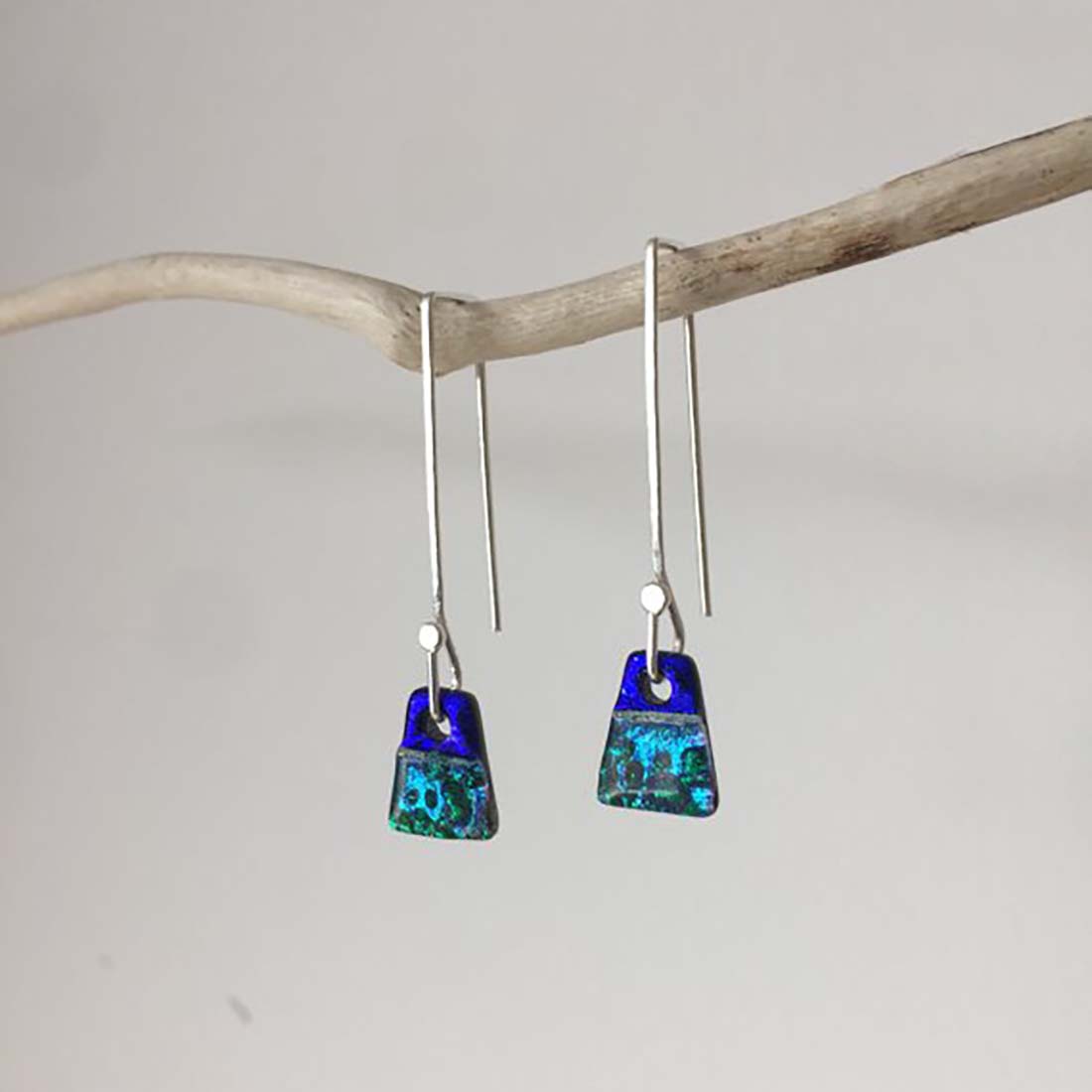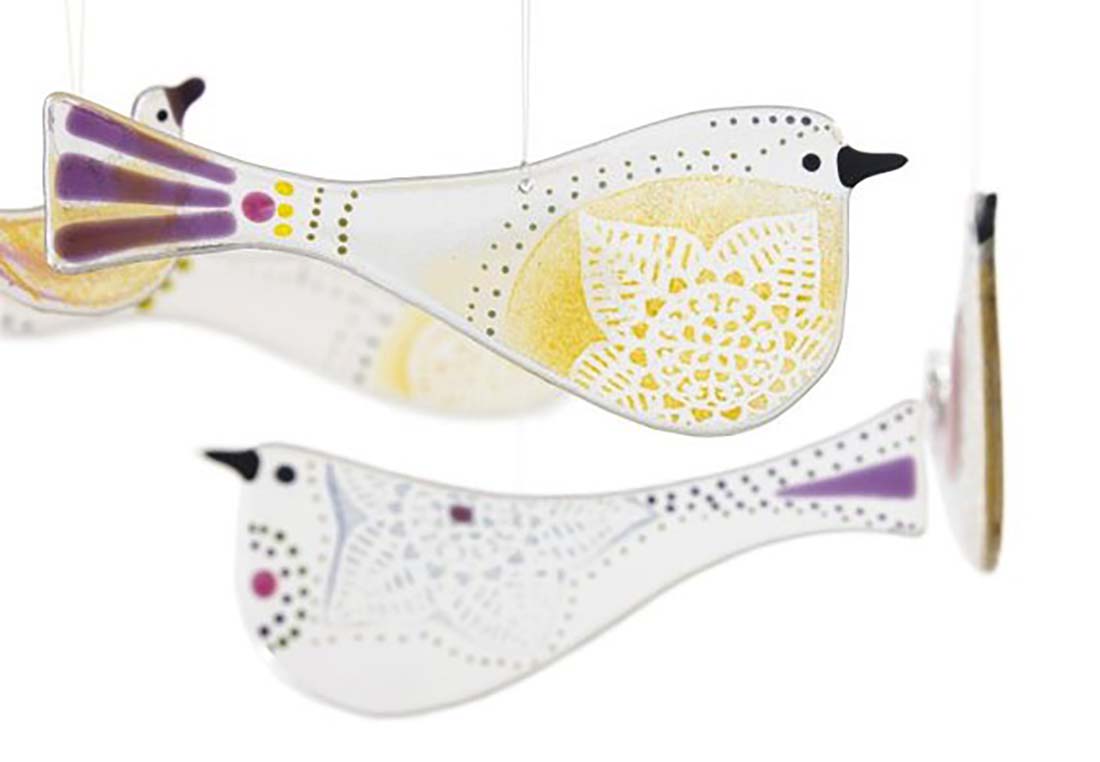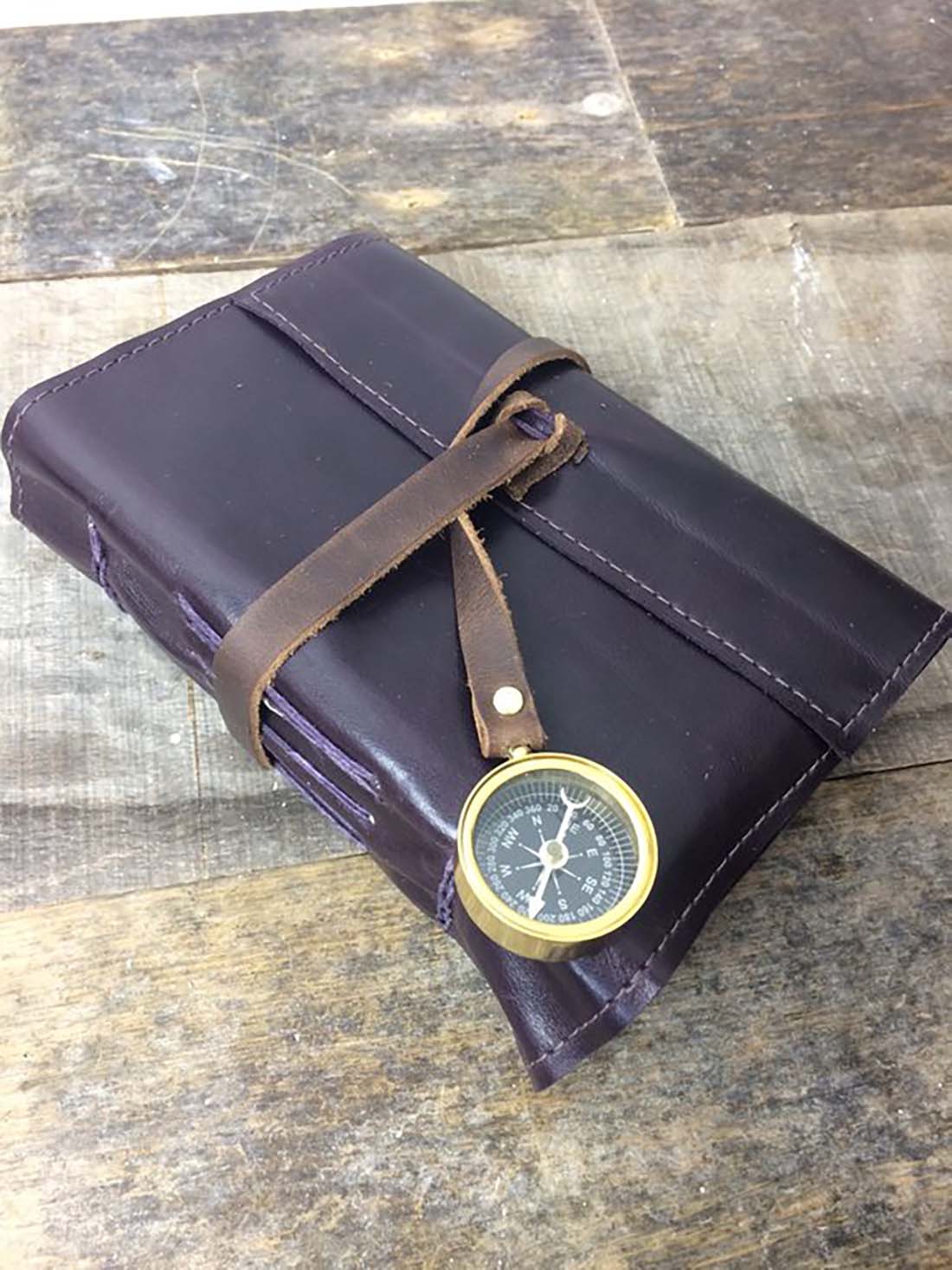
Binding Bee Leather Journal by Megan Winn.
Photo courtesy of Megan Winn
In an effort to better serve its 2 million active sellers, artisan marketplace Etsy recently increased seller fees. It’s the first spike sellers have seen in the company’s 13-year history.
Etsy shops are still “free” to set up, and each item advertised there incurs a $0.20 per item listing fee. However, once an item sells, it is no longer subject to the old 3.5 percent seller fee. Instead, a new 5 percent fee is applied to the sale of both the product and the shipping.
“I’m a maker, not an importer.”
Glass artist Robyn Coetzee is not at all pleased with the changes. “They seem to be ignoring the makers’ needs,” said the Bristol, United Kingdom, artisan behind Robyn Coetzee Glass Designs. “I am very angry at the postal cost charge. I’m a maker, not an importer.”
An example of the new seller costs shows the difference is significant. For instance, Coetzee offers a pair of glass earrings for $33.88 USD, shipped for $10.16 USD from the U.K. to the U.S. Under the old seller fee, she would have paid $1.19 to Etsy, but with the postage now lumped in, the new seller fee is nearly doubled at $2.20. While some shop owners will simply raise prices to account for higher costs, Coetzee instead is taking the loss herself.
The change is enough to make her think about closing her Etsy shop and moving to the British-based marketplace Folksy, though she hasn’t decided just yet. With Etsy’s pledge to improve the seller experience through site improvements and marketing tools, Coetzee is holding out for one item on her wish list: “The ability to upload videos of products would be the most useful and drive more traffic to my page.”


Earrings and Glass Bird by Robyn Coetzee Designs.
Photo courtesy of Robyn Coetzee Designs
“We hope the fee increase will provide sellers with more incentives,” she said. “As the owner, I am very hands-on and love to solve any issues as soon as possible. I would love to be able to pick up the phone and call Etsy directly when I have an issue. I also hope they are able to increase our sales in general.”
Like Coetzee, Powell-Squires would rather her company take a loss, rather than shift these fees onto the customers by raising prices. To help offset the higher fees she’ll pay Etsy this year, she plans to launch a new website for her company, passing along extra discounts and promotions to her loyal customer base.
Optional seller packages
Along with the fee change, Etsy introduced three seller packages:
- Etsy’s free plan is now called Etsy Standard.
- The new Etsy Plus seller package will cost $10 per month, and it offers sellers a few perks like targeted restock notifications, listing credits, and more customized storefronts. The fee will double in January 2019.
- The Etsy Premium plan (cost TBD) will launch in 2019, with management tools to help Etsy store owners with multiple employees.
With plans to join Etsy Plus, Powell-Squires is most excited that customers will be notified when an item is restocked. “Having over 1,000 items listed in our shop, many being huge customer favorites, we sometimes find it difficult to message customers when items are restocked,” she said. “This alone will make Etsy Plus worth it to us.”
But sellers are still in the dark as to what the top-tier Etsy Premium will offer. Powell-Squires longs for the ability to add logins for different employees based solely on their job, giving them access to certain parts of the site, like messages for customer service employees or orders for fulfillment.
A full-time artist living in Indianapolis, Megan Winn stitches leather journals and custom guest books under the name Binding Bee. Like other sellers, she’d like to see Etsy use the revenue to give sellers tools to manage the back end of their business more efficiently and effectively.

Binding Bee Leather Journal by Megan Winn.
Photo courtesy of Megan Winn
At present, the Etsy Plus plan doesn’t add enough value for Winn to sign up, though she is curious to see what shops look like after implementing the perks.
A recent blog post from Etsy speaks more to the specific changes and the intent behind them. “Our commitment to investing in seller success has never been stronger,” said Kruti Patel Goyal, Etsy’s General Manager of Seller Services. “We have an exciting pipeline of launches slated for the coming months, including revamping Etsy’s community spaces, adding new support channels, providing sellers with advanced analytics and insights, and improving Etsy’s shipping tools.”
Etsy’s considerable reach plus the company’s plan to “significantly increase our spend in marketing this year so we can attract new buyers to our marketplace” gives sellers some hope that their shops will grow thanks to more advertising.
Experiments in pricing
Over the past decade, Winn has always charged shipping costs, with the exception of coupons and special promotions. After listening to a podcast by Etsy’s CEO, she’d like to experiment with free shipping.
“I will not raise my prices to include shipping (as was recommended) because I sell in multiple channels and never want my online item prices to be higher than what people pay in person,” she said. Etsy provides 15 to 20% of her overall sales, with wholesale orders and art festivals making up the majority.
“For me, the overhead for selling on Etsy is lower than my other sales venues, so even with the price increase, my margins are still strong.”

Lindsay Conner
contributor
Lindsay is a modern quilter, writer, and editor. A multi-book author with C&T Publishing, her latest project was designing sampler quilts for FreeSpirit Block Party (Stash Books, September 2018). She also works with Craftsy and Baby Lock sewing machines, and is an editor for Frommer's Travel Guides. She lives in Indianapolis with her husband, son, and two cats, who were the inspiration for her adult coloring book and Kickstarter "Project of the Day" Lazy-Ass Cats. www.lindsaysews.com, www.lazyasscats.com


If you don’t upgrade to Etsy Standard I feel the smaller shops will fall even further behind in marketing. It feels like they are having the different tiers to drive out the individual makers.
I’m reading a lot that etsy has never had a price increase before. When you work from percentages it’s all a bit beside the point. A seller charging $20 ten years ago might now be charging $30 and the percentage rate would mean that the selling fee received by etsy was automatically higher. I can’t see any justification for a percentage increase at all. The idea of a fee for shipping is just abhorrent. The postal charges are already prohibitive for overseas shipping (with a lot of error, ripping off and inconsistency built in as well.) It is a long time since I purchased from the US yet I used to do it all the time. I have some sellers I would from again but what used to be reasonable postal rates are now absolutely acceptable. Add to that any customs charges and it just isn’t something I am doing any longer. A further fee for sellers means prices are going to be put up by some sellers in order to try and claw something back. I have read arguments for and against doing that. Never-mind my take on it as a buyer, many sellers seem to have shut the door on me as a potential customer with overseas shipping just not an option anymore. Simply seen as more effort, trouble and expense than we are worth. I don’t really blame them.
Etsy has been pushing free postage prior to its price hikes too. There is no such thing. Some sellers were genuinely swallowing the costs but why should they? Many though were simply charging more for the items, while saying postage was ‘free’ – which etsy liked as they got the extra fees using the percentage system. No wonder they encouraged it! It’s an ugly way of doing business as shipping is not ‘free’ at all and is lying to customers. Conversely, there were some people undercharging for their items and putting it on postage to avoid fees. Etsy has now spiked this by charging fee on post costs as well. Not right, not fair as most sellers didn’t do this.
To be honest I have noticed that so many people in the crafting world who genuinely make their products, have come off etsy. Because crafting is self limiting by time and productivity rates (if you do it all yourself), they can sell all they make via their own shops as they have good and supportive followings on social media. I am seeing etsy shops closing rapidly, with crafters going over to places like Shopify. They don’t need etsy traffic (that’s if the algorithm informed search even brings you any – there are literally millions of shops on etsy. Even with perfect seo shops can’t all be on the first couple of pages or even be included in the 250 pages of search at all, due to the huge number of shops), as they have built up their own customers. Others have their own websites and shopping cart systems or simply sell from Instagram or Facebook. My shopping habits have changed; they are now almost exclusively local (same country) and off etsy.
Etsy don’t care. The price hikes will mean a gain in profit even with the loss of sellers. They are expendable and are replaced with sellers of manufactured goods with larger turnovers, who can make more money for etsy and their share holders.
I think “free shipping” should be called “shipping paid by seller” as there really is no such thing as “FREE” shipping. Postal rates went up significantly in late January, and especially for international packages.
I can understand why Etsy decided to charge a flat rate fee on the selling price and shipping. Lots of sellers were lowering their prices ( or keeping them the same) and raising the cost of shipping because there was not a fee on the shipping.
Some of my customers have used “Merchant Moms” to host/build their website. I really don’t know much about them (fees, reliability, etc. ) so I can’t recommend them, but it might be something for others to look into rather than shopify.
Well, “free shipping” can also mean shipping is paid by the buyer if the seller raises the price of the item to reflect the cost of shipping.
As with all publicly traded companies, it it about the bottom line giving the highest return to the stockholders. The rest is just PR rhetoric to cloud the issue.